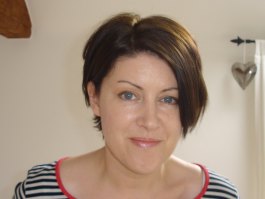WritersServices Self-publishing Guide 3
Help for writers

As we enter into the second decade of the self-publishing revolution, Amazon stands as an indomitable force, particularly in the realm of ebooks. If you're an indie author looking to connect with readers, having a KDP (Kindle Direct Publishing) account is not just beneficial but an essential first step.
For the uninitiated, KDP is your gateway to getting ebooks onto Amazon. It's a straightforward process that empowers authors to upload their creations, set their prices, and fine-tune categories and keywords to enhance discoverability. The process is simple, and self-publishing authors who are new to the world of ebooks need not be fazed. We'll come back to KDP in a moment, but first let's take a look at what you'll need before you start.
An EPUB file
After your masterpiece has undergone the necessary editing and proofreading, the next step is formatting it into an EPUB file. EbooksDigital bookstore selling wide range of ebooks in 50 categories from Hildegard of Bingen to How to Write a Dirty Story and showing how the range of ebooks available is growing., with their fluid, reflowable text, demand a specific format. Using the e-reading device of their choice, readers can change things like font size, orientation and line spacing, making ebooks very different to print books. While Amazon provides its own formatting tool, many find it beneficial to format into EPUB before uploading. Numerous resources are available to assist with this process. NB: Until recently, Amazon insisted on their own proprietary MOBI file format, but now ask for the more common and popular EPUB.
Get it covered
Alongside your EPUB file, you'll need a digital cover in JPEG format. Visualize how it will appear as a thumbnail on the Amazon store. We will look at cover design later in the series, but suffice it to say your cover should scream the correct genre. Your book cover is not the place to try and be too clever or original.
Metadata
Amazon will ask you for a book description, also known as a blurb, two categories and some keywords. Keywords - or keyword phrases - are search terms that help readers find your book. Think laterally here. This is easier for non-fiction, but there are also certain tropes in fiction that you can include to help Amazon show your book to interested readers. Don't forget that you can use keywords in your book description as well.
Select or not?
No discourse on KDP is complete without a nod to Amazon's Select programme. Opting for exclusivity - meaning your book is available only on Kindle - grants you access to special perks. Kindle Unlimited members can borrow your book, earning you extra royalties. Additionally, you can set your book as free for a limited period, a strategy valued by many indie authors as a promotional tool. However, exclusivity has its downside. While your book is flourishing on Kindle, readers on other devices may miss out. And if you have your own website or store online, you can't sell this book in digital format while its enrolled. Many authors enrol in KDP Select initially and later expand to other platforms after maximizing their free promotions.
Ready to upload! Sign up for a KDP account using your Amazon credentials. KDP offers two royalty options: 70% for books priced at $3.99 or above, and 35% for those below. Pricing strategies vary, and experimentation is encouraged to find what resonates with your audience. When you've completed all the steps click ‘Publish' and in a few hours your ebook will be available for sale in the Kindle store. Congratulations!
WritersServices Self-publishing Guide 1: What is self-publishing? Revised
An explanation of self-publishing as it stands today, introducing the term ‘indie' and a brief overview of routes to market for indie authors.
WritersServices Self-Publishing Guide 2: Choose Your Self-publishing Route Revised
WritersServices offers its 22 highly-regarded services, including copy editing and polishing.
Joanne lives in Cheshire, England with her teenage daughter. She writes and produces audio dramas as GravyTreeMedia, and romantic comedies, literary fiction and cozy mysteries as an indie author. An award-winning novelist, Joanne has a Masters in Creative Writing, and is a freelance publishing professional. Connect with Joanne at www.joannephillips.co.uk and on social media - she loves hearing from readers (and will probably send you some free stuff to say thank you).
Connect on:
Facebook: http://www.facebook.com/joannephillipsauthor
Twitter:@joannegphillips
Amazon: http://www.amazon.co.uk/Joanne-Phillips/e/B0083UEG86/
Other articles by Joanne Phillips on the WritersServices site:
The Business of Writing
The Ins and Outs of Indexing
How to Market Your Book Online
